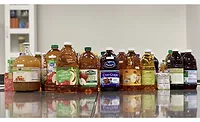Levels of Mercury in Tuna Cans Inconsistent, Says Consumer Reports

Credit: Towfiqu barbhuiya via Pexels
Consumer Reports (CR) recently tested canned tuna from popular brands, and observed varying levels of mercury, a toxic heavy metal found in foods, on a can-to-can basis. According to CR’s food safety experts, some cans of tuna have such high levels of mercury that it could impact the health of an unborn child if eaten by a person who is pregnant.
However, CR also found that canned tuna, especially light varieties, has relatively low average levels of mercury in general. The unpredictable levels of mercury found from can-to-can are still a concern for vulnerable populations, per CR.
Mercury is a known neurotoxin that is especially harmful to young children, but in high amounts mercury can be harmful to adults as well. The toxic heavy metal is of particular concern for pregnant people, due to the vulnerability of their unborn children.
CR tested a total of 10 canned tuna products, including two varieties, albacore and skipjack, from each of five tuna brands: Bumble Bee, Chicken of the Sea, Safe Catch, StarKist, and Wild Planet. CR tested three samples of each product, from different lots, for a total of 30 samples. All tuna products came packed in water, which was drained before testing.
Of the total samples, one in five cans of tuna had a spike in mercury content that would exceed the U.S. Food and Drug Administration’s (FDA’s) recommendation about tuna consumption. CR also analyzed FDA data from 2014 and found the same percentage of tuna cans to have heightened levels of mercury.
Another key finding was that albacore tuna contains over three times more mercury than skipjack or light tuna on average. While mercury levels in CR’s test were higher in albacore than in light tunas, some brands had a much larger variation than others. For example, Chicken of the Sea’s albacore had 10 times more mercury than its light tuna, but mercury levels in Wild Planet’s albacore and skipjack tunas were similar.
Additionally, none of the albacore CR tested had mercury levels low enough for an adult to have three servings a week. Only Bumble Bee’s albacore had levels that would allow two weekly servings. The rest of the albacore tunas had levels that warrant just one serving a week, and CR advises that children avoid albacore completely.
According to CR, all but one light tuna variety had mercury levels low enough that, assuming no other fish is consumed, would allow adults who are not pregnant to safely eat three 4-ounce servings a week, and children could eat two 1- to 4-ounce servings (depending on age). The group reports that a third of Americans eat tuna two or more times a month, and 10 percent eat the fish at least once a week.
Looking for quick answers on food safety topics?
Try Ask FSM, our new smart AI search tool.
Ask FSM →








